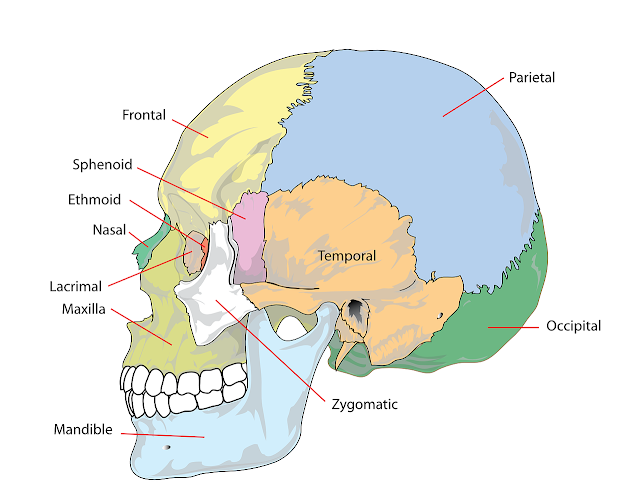Axial and appendicular skeleton
AXIAL SKELETON
Skull
The skull consists of cranial bones and facial skeleton.
It is mainly protects the brain and sensory organs. Due to the presence of sinuses, it participates in voice modulation and air heating.
• ethmoid
Spine
It supports the body and protects the spinal cord and spine nerves. It consists of 33-34 vertebrae. There are cartilages between the vertebrae which give resistance to shock and flexibility.
the cervical spine - consists of 7 vertebrae. It is the support for the skull
the thoracic spine - consists of 12 vertebrae. It is part of the chest.
the lumbar spine - consists of 5 vertebrae. It bears the weight of the upper body.
the sacrum - consists of 5 fused vertebrae that form the sacrum. This bone is one of the bones that make up the pelvis.
the coccyx - consists of 4 vertebae (sometimes 5)
Rib cage
It consists of the thoracic spine, the sternum and 12 pairs of ribs. It protects the heart and lungs, is a place of attachment for many muscles, and allows you to inhale and exhale.
There are 3 types of ribs:
true ribs - directly connected to the sternum
false ribs - connected to the sternum by cartilage
floating ribs - not connected to the sternum
APPENDICULAR SKELETON
Upper limb
It is made up of the humerus, radius, ulna, carpals, metacarpals and phalanges. It also includes clavicle and scapula (shoulder girdle).
The bones of the upper limb, along with the joints and muscles, allow for precise movements.







Comments
Post a Comment